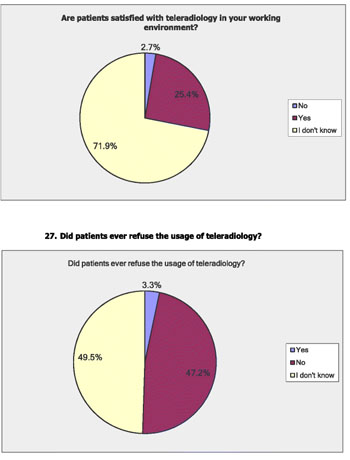Survey Results Analyze New Developments and Services in Teleradiology
By MedImaging International staff writers
Posted on 06 Jun 2016
The results of two teleradiology surveys are expected to provide parameters to support experts and policy makers, and promote appropriate guidelines and criteria for the use of teleradiology in clinical practice in Europe.Posted on 06 Jun 2016
The report was published on May 17, 2016, in the online issue of the journal Insights into Imaging. The first survey was sent to 44 national societies in Europe, and the second survey was intended for practicing radiologists.

Image: A pie chart depicting the degree of satisfaction of patients with teleradiology (Photo courtesy of Springer Nature, and the European Society of Radiology).
The surveys were carried out by the European Society of Radiology (ESR; Vienna, Austria) and were aimed at understanding how teleradiology is being adopted and implemented in clinical practice in Europe. The surveys were designed to differentiate between partners of an organization that insource teleradiology services, and those that outsource to external services.
The results of the first survey showed that many of the National Societies’ countries use insourcing and outsourcing for teleradiology, and that the two are balanced. Outsourcing was associated with concerns about quality and legal issues, and a reduced clinical role for radiologists. The second survey showed that teleradiology is widely used in Europe, but that there is fear that teleradiology will deteriorate hospital-based radiology, and result in commoditization of low cost external radiology services. The authors conclude that more attention needs to be paid to the point of view of patients regarding the use of teleradiology, to accommodate current trends for patient-centric healthcare.
Related Links:
European Society of Radiology














